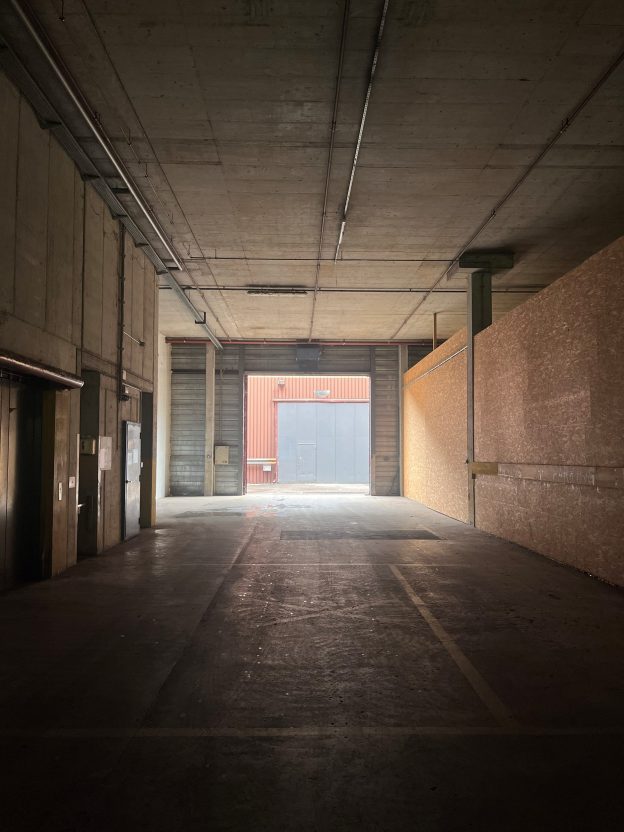ATELIER JMA-FR 2
Atmosphères. Revitalisation de la friche industrielle de la Pisciculture à Fribourg
Orientation transformation
 Friche de la Pisciculture @ Violaine-Ophélie Coen
Friche de la Pisciculture @ Violaine-Ophélie CoenContenu CONTENT
La perspective de la durabilité exige un changement de paradigme architectural qui resitue l’humain au sein de la nature et qui met en avant le ré-usage, l’adaptation, voire la transformation des bâtiments et des espaces ouverts. D’habitude, le point de départ d’un projet d’architecture est un programme qui doit être converti dans une forme spatiale et matérielle dans un site donné. Ce semestre nous allons explorer une démarche inverse, le point de départ étant un site pour lequel il faut trouver un nouveau programme. C’est l’essence même d’un projet de transformation qui est, justement, l’adaptation graduelle de l’existant à un nouvel usage et à la fois d’un programme générique aux spécificités du site. La friche industrielle de la Pisciculture à Fribourg est un terrain propice pour cette démarche car elle présente des caractéristiques exceptionnelles, tant naturelles – la falaise et les bords de la Sarine -, que bâties – une série des halles avec des énormes espaces. Quoi préserver ou/et améliorer, où et comment introduire du nouveau, quels changements minimes pour un maximum d‘effets et, finalement, comment faire coopérer les forces naturelles et les communautés humaines sont les questions qui orientent le projet d’ensemble urbanistique et de détail architectural. L’atmosphère est le moyen de projet que nous allons privilégier car, étant l’expression d’un ressenti global, existant ou imaginé, il est capable de couvrir toutes ces questions.
The prospect of sustainability requires a paradigm shift in architecture that re-establishes humans within nature and emphasises the reuse, adaptation and even transformation of buildings and open spaces. Usually, the starting point for an architectural project is a programme that must be converted into a spatial and material form on a given site. This semester, we will explore the opposite approach, where the starting point is a site for which a new programme must be found. This is the very essence of a transformation project, which is precisely the gradual adaptation of the existing structure to a new use and, at the same time, of a generic programme to the specific characteristics of the site. The industrial wasteland of the Pisciculture in Fribourg is a suitable site for this approach because it has exceptional characteristics, both natural – the cliff and the banks of the Sarine – and built – a series of halls with enormous spaces. What to preserve and/or improve, where and how to introduce new elements, what minimal changes will have maximum effect and, finally, how to bring natural forces and human communities together are the questions that guide the overall urban planning and architectural design. Atmosphere is the project approach we will favour because, as the expression of an overall feeling, whether real or imagined, it is capable of covering all these questions.
Objectifs d’enseignement TEACHING AIMs
- Être capable de développer un positionnement personnel critique et éthique dans le cadre de problématiques architecturales complexes.
- Être capable de d’élaborer un projet d’architecture et urbain spécifique, plausible, pertinent et argumenté.
- Être capable de d’aborder et développer le projet d’architecture selon différents niveaux de compréhension : transdisciplinarité et thématiques périphériques à l’architecture, multiculturalité, degrés d’abstraction.
- Être capable de définir de manière autonome une problématique architecturale complexe du projet d’architecture : thématique, objectifs, site d’intervention et programme.
- Être capable de développer une approche itérative du projet : générer et tester systématiquement des idées, analyser et évaluer les options de projet.
- Maîtriser l’interaction entre les utilisateurs, les bâtiments et l’environnement
- Être capable de développer de méthodes de travail personnelles et collaboratives.
- To be able to develop a critical and ethical stance on complex architectural issues.
- To be able to elaborate a specific architectural project taht is plausible, relevant and well-argued.
- To be able to approach and develop architectural projects according to different levels of understanding, such as transdisciplinarity and themes connected to architecture, multiculturalism, and degrees of abstraction.
- To be able to autonomously define a complex architectural issue: theme, objectives, intervention site and programme.
- To be able to develop an iterative approach to the project: generate and test ideas, analyse and evaluate project options.
- To master the interaction between users, buildings and the environment.
- To be able to develop personal working methods.
Formes d’enseignement TEACHING METHODS
La méthode d’enseignement est basée sur une pédagogie « de découverte » qui vise à créer les conditions favorables pour le développement personnel de l’étudiant·e ; ce qui compte est l’évolution individuelle, la différence entre ce que vous savez faire à la fin par rapport au début du semestre. Le travail de projet aura lieu sous la forme d’un laboratoire de recherche, combinant l’action, la réflexion et le dialogue critique. Il va s’appuyer sur des cours théoriques.
The teaching method is based on a “discovery” pedagogy that aims to create favourable conditions for students’ personal development. What matters is individual evolution: the difference between what you know how to do at the end of the semester compared to the beginning. Project work takes the form of a research laboratory, combining action, reflection, and critical dialogue, both in teams and individually. Theory will also be an important part of the course.

